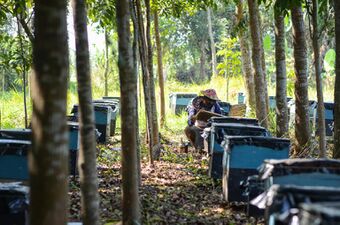Project C.A.T.+WWF: Double the Number of Tigers
| Organization | World Wildlife Fund - US |
|---|---|
| Region | India |
| Website | Website |
| ProjectLeader | Cheron Carlson |
| Linked Problems & Solutions
|
|---|
93% of their habitat is lost. The remaining 3,890 tigers in the wild are clinging to survival in patches of forest across Asia. Along with habitat loss, poaching is the most immediate threat to tigers. Every part of the tiger-from whisker to tail-is traded in illegal wildlife markets. To save them, we must protect their forests, and end poaching. Your support can help protect their habitat, grow their population, and train rangers to stop poachers in their tracks.
Challenge
To protect one tiger, we have to conserve around 25,000 acres of forest - forests that are destroyed or fragmented for agriculture and timber, as well as the building of road networks and other development. Simultaneously, there are limited resources for guarding protected areas in the countries where tigers live. The result is a never-ending battle against poaching, which is now often orchestrated by transnational crime syndicates that profit from wildlife crime.
Long-Term Impact
After a century of decline, tiger numbers are on the rise. By continuing to monitor tigers, work with governments across the 13 tiger range countries, and enhance the training and resources of rangers who put their lives on the line to protect this species, we can together reach our goal of doubling the tiger population by 2022. Tigers will be able to play a key role in maintaining healthy ecosystems which support other wildlife, natural resources, and the communities that rely on them.
References
- http://www.worldwildlife.org/
- https://www.worldwildlife.org/species/tiger
- https://www.worldwildlife.org/pages/back-a-ranger
- http://projectcat.discovery.com
Additional Documentation
https://www.globalgiving.org//pfil/30333/projdoc.docx
Project Gallery










